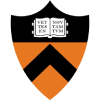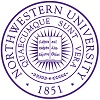专业详情
PROGRAM DESCRIPTION:
Professional Master’s Degree
The Master of Architecture (M.Arch.), accredited by the National Architectural Accrediting Board (NAAB), is intended for students who plan to practice architecture professionally. The M.Arch. qualifies students to take the state professional licensing examination after completing the required internship. Refer to the NAAB statement on the School of Architecture’s website(link is external) for more information.
Students are eligible for admission to the graduate program whether or not they have had undergraduate work in architecture. The typical duration of the program is three years; students with an intensive undergraduate architecture background may be eligible for advanced standing.
Post-Professional Master’s Degree
A post-professional M.Arch. degree is available to those who hold the degree of Bachelor of Architecture (B.Arch.) or its equivalent from an international institution. These are students who have successfully completed a professional program in architecture and have fulfilled the educational requirements for professional licensing in the state or country in which the degree was granted. Students typically complete this program in two years. The post-professional degree is not accredited by the NAAB.
COURSES:
Students in the professional M.Arch. program must take a minimum of 25 courses, typically four per term, including one design studio each term and the independent design thesis in the final term. The studio sequence, required building technology and professional practice courses, and courses in history and theory of architecture and urbanism constitute a core knowledge of the discipline. In addition to these required courses, each student must complete distribution requirements within the areas of history and theory and building technology. In order to encourage the development of an individual program of study, each student may select up to three electives, which may be fulfilled with any course offered within the University and approved by the director of graduate studies.
Students granted advanced standing are usually required to take a minimum of 16 courses within the distributional requirements of the three-year program, including one design studio each term and the independent design thesis in the final term. Because of the differences in the educational backgrounds of students entering with advanced standing, the required number of courses in the areas of distribution is determined by the director of graduate studies after reviewing each student’s transcript and experience.
While students normally take four courses each term, in their final term of the program they may enroll in and complete as few as two courses, provided that total course requirements will still be met and additional time is needed in the final term to meet the specific research requirements of the thesis. Students who wish to enroll in fewer than four courses in the final term must have this request reviewed and approved by the director of graduate studies.
Students in the post-professional master’s degree program are granted wide latitude in course selection in order to create a program of study which aligns with their individual educational and research goals. The courses are distributed across the areas of design studios and a design thesis, history and theory, building technology, and elective courses that can be taken throughout the University with the approval of the director of graduate studies. Students are required to complete a minimum of 14 courses.
THESIS:
The thesis at Princeton is understood to be the culmination of the Master of Architecture curriculum. As such, it is the moment when the student contributes to, and advances, the discipline. Students participate in a thesis workshop during their penultimate semester. The aim of this workshop is to hone topics by situating them within a lineage—articulating where a project resembles or differs from works that have addressed such topics—and by developing a focused argument for a particular approach to the question. The thesis design project, conducted as independent work during the final semester, then tests this approach in a project whose underpinnings are pointed toward the synthesis of intellectual and design objectives. The thesis concludes with a public final review, where the project is evaluated both on its own terms and within the broader field of contemporary architectural discourse.
ADDITIONAL REQUIREMENTS:
Computer Requirement
Students in the Architecture program are strongly encouraged to own a Windows or Mac computer during their tenure. The School of Architecture does provide 12 high-end Dell Desktops and 4 iMacs in the computer lab with a full suite of software. Recommendations for personal computer purchases include a minimum 512 SSD hard drive, 16GB RAM, decent graphics card and processor. Computers should have the most updated operating systems with virus software installed. Most software provided by the School of Architecture is via network distribution and is Windows based. In addition, students are required to pay an annual $350 lab fee for access to the computers, plotters, printer, scanners and networked software.


